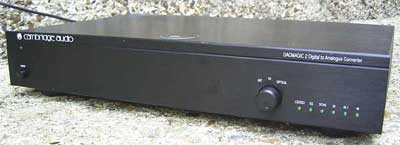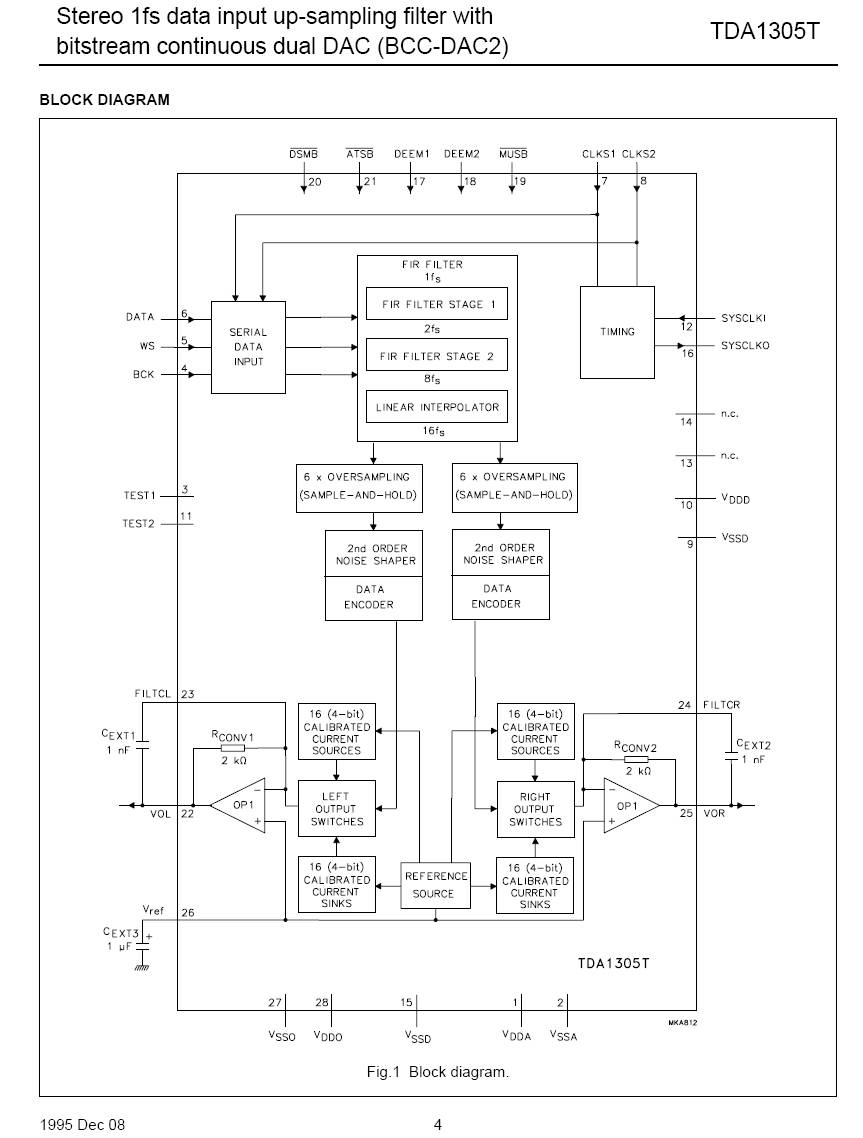 Cambridge DACmagic 2 gold
Cambridge DACmagic 2 gold
Summer 2006
looking for a perfect base DAC unit for lampization ???
It had to be cheap, with Philips or Burr-Brown chips, with space inside
and balanced config.
DACMAGIC fulfils all these criteria and more. It is a hell of a DAC -
designed by Pink Triangle and made in UK. Very impressive inside - gold
PCB, 3 transformers (after lampization - 4 !) fully digitally
balanced configuration -
etc etc.
PHILIPS TDA1305 chip - sounds very promising indeed. Two of them ? Even
more interesting ?

With external lampizator it sounds VERY good indeed. It beats hands
down the Marantz 17SE which it replaces (as a DAC of course). The sound
is more natural, more warm, details are "organized" in space in such
way that they create credible natural soundscape. With the 1547 - the
details are the same but not so naturally placed. A singing opera diva
gives you goosebumps on 1305, on 1547 it just is an okay performance.
The difference - to be sure - is VERY SUBTLE and small, but the
preference is clearly towards Dacmagic.
Now all that is BEFORE lampization.
After lampization - the final verdict is the same but the difference is
more apparent.
This combo was bought from me by a professional opera critic who owns
most CD's of anybody I ever met. He spends all his days and
nights listening critically to classical music. That's something I
appreciate.
Later I found out, that the TDA1305 DAC chip has identical datasheet
and pinout and specs as the TDA1549T which I absolutely love. Maybe
they share some technology. Read about the
TDA1549T HERE
At first sight the TDA1305 seems to be U out DAC and that is how I
lampized it - Voltage out taken to SRPP tubes 6N6P via a foil cap.
But the close inspection of the TDA1305 datasheet reveals a possibility
of disabling the internal op-amp and stealing the I out current.
Some people say the DAC can be CONVERTED to current output status.
Similarily - the TDA1543 and 1547 can be done like that.
In this case - after such microsurgery the tubes change to 6N2P or
ECC81 and the cap before grid is gone.
I havent tried it yet although I sure will.

As you can see above, the temptation is to use pins 23 and 24 for I out
and disable the opamps. We should probably float the pins 22 and 25 and
kill the opamp supplies - one of the supplies drawn on the bottom of
the diagram above. We should also remove the capacitors CEXT1 and CEXT2.


Eventually of
course I put lampizator circuit inside the DAC box - there is plenty of
room.




The mighty king of transports - Kenwood 9010X drives the Cambridge DAC

This is what I
found on the web about this product:
Cambridge Audio Digital Audio Converter
Model History:
DacMagic was designed by John Westlake, former Pink Triangle Tech, and
digital conversion is accomplished by a pair of Philips TDA 1305
"18-bit" hybrid chips (the Naim CD 3.5 uses one).
DacMagic 2: Dual Philips TDA1305 hybrid DACs with symmetrical dual
differential circuitry. Three separate transformers feeding 19
independent power supplies. DacMagic 2 is an improvement over the
DacMagic 1.
DacMagic 2i: Many significant improvements. Design revisions resulted
in reduction in distortion by as much as 50 per cent, gold-plated
printed circuit boards and connectors, and better quality low-noise
transformers.
DacMagic 2 Mk II: same as DacMagic 2i but with Analogue Devices AD712JN
output chips.
DacMagic 3: the last of the series.
Submitted by Job Chithalan
Dac
Magic 2
Technical Data (taken from
Instruction Manual) :
D/A
Converter: Dual Philips TDA 1305 multi/single-bit hybrid
Sample Rates: 32, 44.1, 48khz, automatically traced and locked if
within tolerance.
(for operate with CDPs, DVD players, FreeView Boxes, NICAM and Digital
Audio Broadcasting (from satellite), DCC/DAT players.
LED Indicators (7): Locked, EQ, SCMS, 32, 44.1, 48 and power on/off
Digital inputs: 3 (2 BNC Electrical, 1 Optical)
Digital outputs: 1 (BNC) S/PDIF 75ohms
Analogue outputs: 2 pairs (1 phono pair, 1 balanced pair)
Frequency range: 4Hz to 20 Hz +/-0.5dB
Total Harmonic Distortion (typical): less than 0.005% at 1 kHz
Signal to Noise Ratio : greater than 110 dB
Dynamic Range: 100dB at 1kHz
Channel separation: greater than 130dB at 20kHz
Audio output level: 2.8V RMS
Inter Channel balance: =/- 0.5dB
Power consumption: 30W
Dimensions (mm): 430w x 315d x 92h
Reviews:
"Instant upgrade for a budget player but out of its depth within a
properly designed hi-fi CD player." - Hi-Fi World, Jun 95, £150.
The Star Online : Audiofile review of DacMagic 2i is at
http://202.186.86.35/audio/story.asp?file=/1996/5/05dac
Cambridge Audio: DacMagic 3 review is at
http://www.audioweb.com
User Reviews and comments at
http://www.audioreview.com
Mods and Upgrades:
An illustrated 3-page article in the Jan 1999 edition of Hi-Fi News
& Record Review covered modding a DacMagic II Mk 2. It can be
downloaded as a .pdf file at http://lickham.co.uk/pdfs/dacmagic.pdf
(922k)

 Cambridge DACmagic 2 gold
Cambridge DACmagic 2 gold






